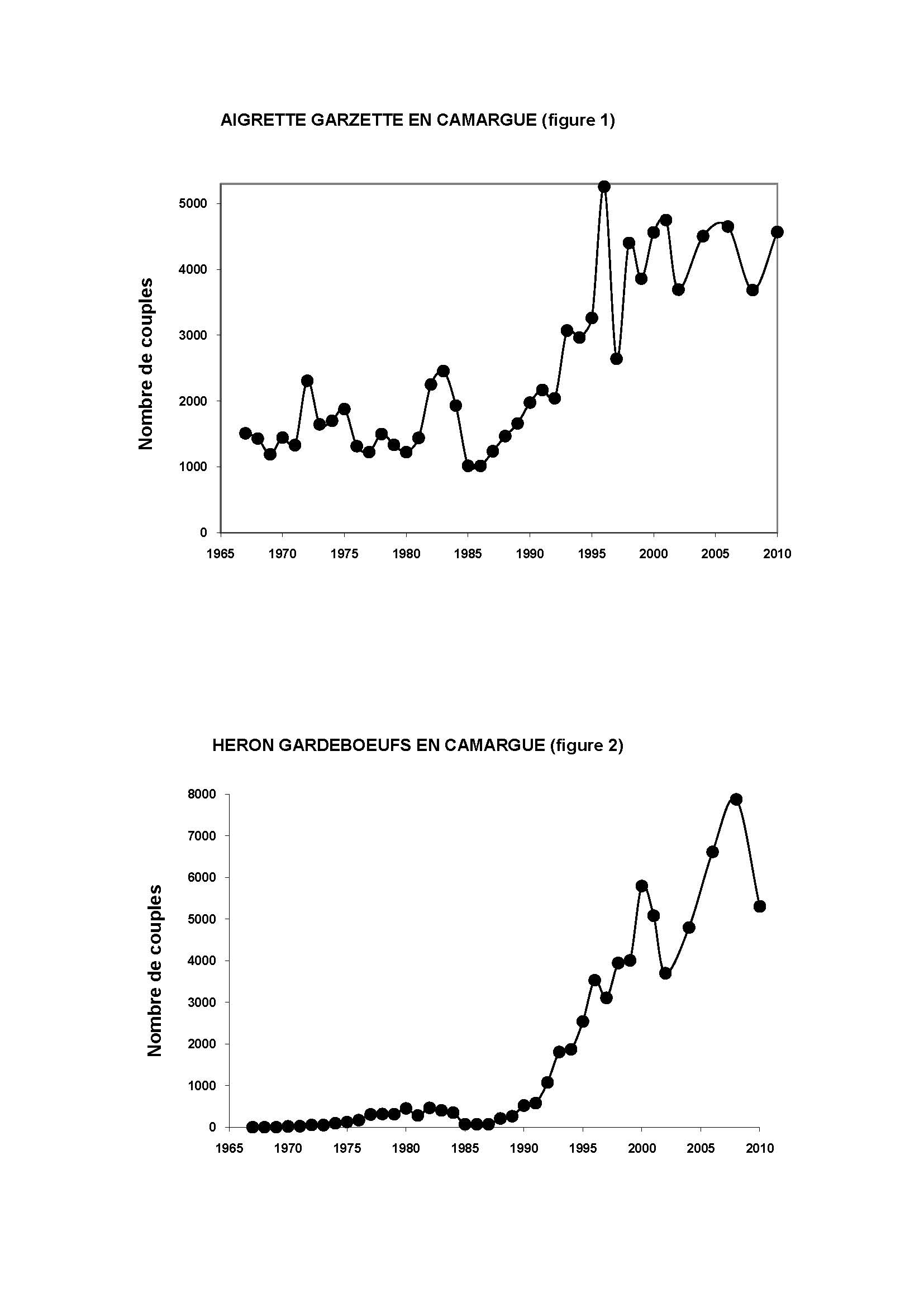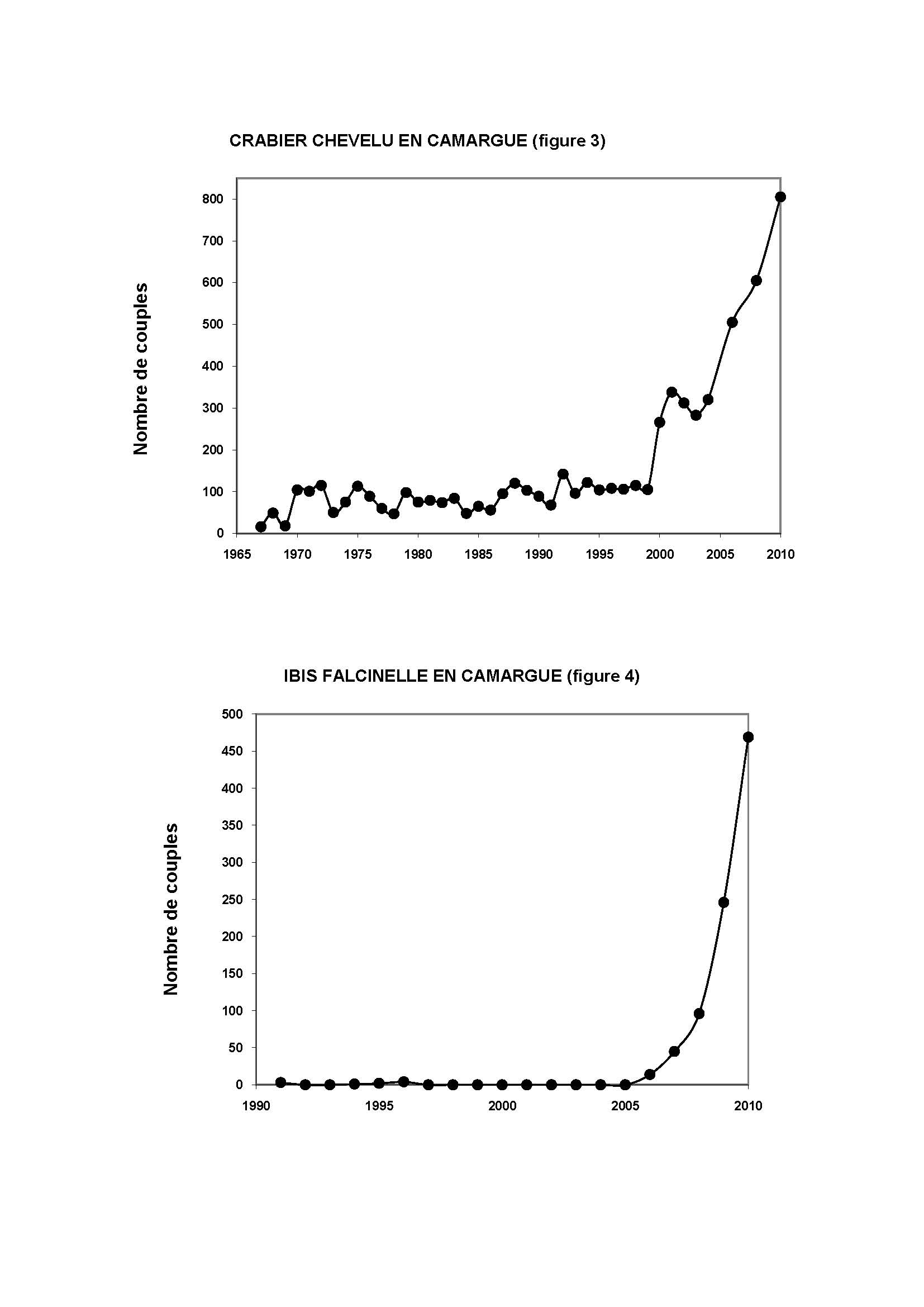Investigate demographic trends in order to implement conservation measures
During the last twenty years the breeding populations of tree-nesting herons in Western Europe have increased considerably. And it is in France, in the Camargue, that the largest populations of Cattle Egret, Little Egret and Squacco Heron are to be found. For five years the Camargue has also sheltered a breeding population of Glossy Ibis.
The Ardeidae family, the herons, counts sixty-two species worldwide. Due to its Mediterranean position and mosaic of habitats, the Camargue plays host to all the European heron species: Grey Heron (Ardea cinerea), Purple Heron (Ardea purpurea), Great Egret (Ardea alba), Little Egret (Egretta garzetta), Cattle Egret (Bubulcus ibis), Squacco Heron (Ardeola ralloides), Black-Crowned Night Heron (Nycticorax nycticorax), Eurasian Bittern (Botaurus stellaris) and Little Bittern (Ixobrychus minutus).
During the last fifty years, several heron species have undergone major changes in the Camargue. Several new species have established sustainable breeding populations. For example, having disappeared from the Camargue during the 19th century, the grey heron re-colonised the region in 1964. The Cattle Egret, which nested in Africa and Southern Spain, spread northwards during the 20th century and sustainably colonised the Camargue in 1967. The great egret arrived during the 2000s, overspilling from growing populations in Central Europe.
Herons use all the wetland habitats of the Camargue, such as marshes, reed beds, saline scrub, lagoons and rice fields, while Cattle Egrets use dry habitats such as grasslands. Their diet is very varied, including fish, amphibians, molluscs, crustaceans, insects and small mammals.
They also have a wide range of strategies. Certain species such as the Squacco and Purple Herons winter in sub-Saharan Africa, while many Little and Cattle Egrets winter in the Camargue. The Night Heron mainly feeds at night, whereas egrets feed by day. In the Camargue, the Purple Heron nests almost exclusively in reed beds, while the Grey Heron may nest in either trees or reed beds.
The work of the Tour du Valat
Inspired by the work of Valverde, particularly in the Camargue in the early 1950s, in 1967 the Tour du Valat initiated long-term studies of tree-nesting herons. Major scientific work was carried out over several decades by Heinz Hafner and his team in order to determine their ecological requirements and the threats they face. Since the 2000s, the very favourable conservation status of tree-nesting herons has enabled research efforts to be oriented towards the conservation of other species.
Nevertheless, all the species continue to be monitored. An exhaustive count of breeding heron populations throughout the Camargue (Petite Camargue, Ile de Camargue, Plan du Bourg) was carried out very year between 1967 and 2002, then every other year since 2002 due to the large number of colonies. The objective is to detect the main demographic trends affecting the species. The heronries are first located by airplane at a height of 1000 feet and by ground-based searches. The number of breeding pairs is estimated from the nest count using the same method each year.
Overall growth of the Herons and Ibis population
- During the 2000s, on average some 20 new tree-breeding heron colonies were established in the Camargue every year. But the trends are different : while the Little Egret’s rapid expansion stopped more than ten years ago (Figure 1), the Cattle Egret is regularly continues to be on the rise, exceeding the 8 000 pair mark in 2008 (Figure 2). Concerning the Squacco Heron, its numbers oscillated around 100 pairs for decades, it has seen very high population growth in the last ten years, exceeding 800 pairs in 2010 (Figure 3).
 |
 |
- After sporadic cases of successful breeding in the1990s, the Glossy Ibis became sustainably established in the Camargue as from 2006, when 14 pairs bred at the Scamandre Centre, producing 45 fledglings (Figure 4). This colonisation of the Camargue followed on from the species’ gradual re-colonisation of the western part of the Mediterranean basin since the 1990s, for example in Spain, Italy and Algeria. The Camargue population is still increasing, exceeding 500 pairs in 2011. Every year the Tour du Valat carries out a ringing operation which in particular highlights exchanges with the Spanish and Moroccan populations.
The main factors of this rapid expansion
First of all, they have benefited from the setting up of the status of protected species. Until the early 20th century, egrets and herons were subject to widespread killing in order to supply the hat and fashion industries with feathers.
In addition, in the Camargue, changes in water management for hunting or rice-growing, leading to greater surface areas remaining flooded from April to July, have been particularly favourable heron and ibis species by proving food resources throughout their breeding period.
In order to become established, these species also need large undisturbed areas, and the creation of new reserves in the Camargue, such as the Scamandre or Vigueirat marshes, have enabled the establishment of new colonies.
Finally, they benefit from new resources such as the invasion of Louisiana crayfish and also milder winters over the last few decades, which have reduced the winter mortality rate (even though there were some cold snaps during the 2000s).
NB! New on-line scientific journal about herons
HeronConservation is the world’s leading body of scientific, practical, and conservation expertise on the biology, status and conservation of the herons of the world. It is an interactive global network of heron specialists, conservationists, biologists and managers. Their aim is to promote and secure the conservation of herons and their habitats worldwide. The group has created an on-line, open-access publication, “The Journal of Heron Biology and Conservation”, which invites contributions on all aspects of heron biology and conservation worldwide. Find out more at
www.heronconservation.org/styled-80/
References :
*Heron conservation edited by James A. Kushlan and Heinz Hafner. Academic Press. 480 p
*Conserving Herons. A conservation Action Plan for the Herons of the World. James A. Kushlan. Heron Specialist Group & Tour du Valat Arles (FRA) 93